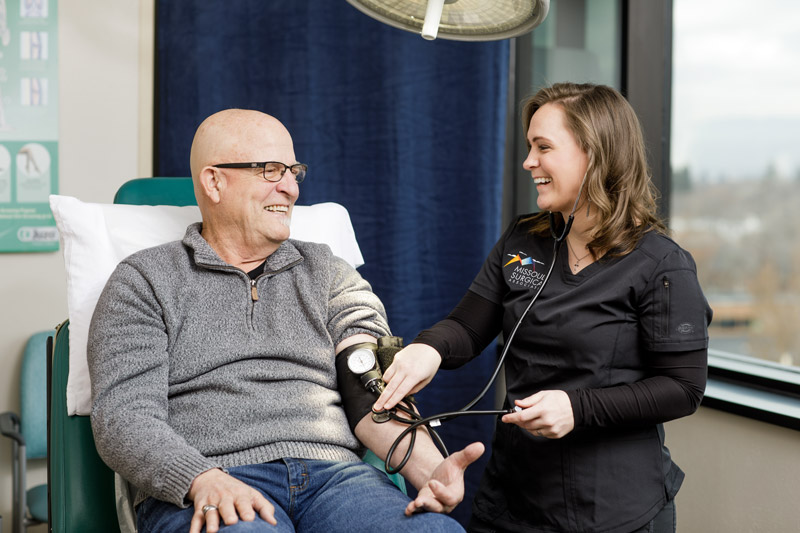

Here you’ll find the latest advancements in breast cancer surgery
Hidden Scar
Traditional surgical techniques leave prominent scarring. But with Hidden Scar, the incision is placed in a location that’s hard to see, so that the scar is not visible when your incision heals. As a result, you have little to no visible reminder of the surgery or your cancer.
Nipple Sparing Mastectomy
This recent surgical advancement can produce results that were previously unachievable, potentially leaving a better breast appearance after the mastectomy than before. It allows for more upright and natural looking breasts after reconstruction.
A nipple sparing mastectomy leaves the full breast skin envelope and nipple completely intact. The minimization of scarring and more natural look are substantial improvements in breast cancer care.
“Today, breast cancer patients who are not offered nipple-sparing procedures should ask their surgeons why. As this study shows, these surgeries are proving safe for a broad patient base.”
Tina Hieken, M.D.,
Mayo Clinic breast cancer surgeon
“We are able to achieve really wonderful cosmetic results with this procedure.”
Dr. Amy Degnim,
Mayo Clinic breast cancer surgeon
Breast Cancer Diagnosis Options
A breast biopsy is a procedure that removes a small sampling of breast tissue for diagnostic examination. Your doctor may use any of the following biopsy options for diagnosing your cancer:
- Core Needle Biopsy – This procedure uses mammogram or ultrasound imaging to guide the needle directly into the mass so a small portion can be removed and examined.
- Incisional Biopsy – During this procedure, a small incision is made to remove a small portion of the mass.
- Excisional Biopsy – This procedure removes the entire mass.
- Stereotactic (needle-localized) Biopsy – This type of biopsy uses mammogram or ultrasound imaging to guide a needle to the mass. An incision is then made to remove a portion of the mass.

Cancer Stages
Staging of breast cancer involves a number of factors including the size of the tumor, whether lymph nodes are involved and whether the cancer has spread to other areas.
Early Stages
- Stage 0 – non-invasive cancer present in the lining of a lobule or duct
- Stage I – cancer has spread to nearby tissue, tumor is ¾ inches or less in diameter, lymph nodes are not involved
- Stage II – cancer has spread to nearby tissue, tumor is ¾-two inches in diameter, lymph nodes may or may not be involved
Advanced Stages
- Stage III – cancer has spread to tissue in or near the breast, tumor may be larger than two inches across, lymph nodes may or may not be involved
- Stage IV – cancer has spread from breast to lymph nodes to other parts of the body, such as the liver, lung, brain or bone (known as metastatic cancer)
Surgical Treatment Options
When surgical treatment is needed for breast cancer, we’ll will work closely with your team of specialists to collaborate on a specific treatment plan and ensure your procedure is tailored to your specific needs. Our on-site breast care navigator will work directly with you to coordinate all of the twists and turns in your treatment journey. Surgical options include:
Lumpectomy – This procedure removes the cancerous tissue and some surrounding tissue from the breast, while leaving the breast intact. In some cases, lymph nodes may also be checked during a lumpectomy to ensure cancer cells have not spread there. Lumpectomies are typically restricted to patients with early stages of breast cancer. They are often accompanied by several weeks of radiation therapy.
Mastectomy – A mastectomy is a surgical procedure to remove one or both breasts. It is usually recommended for patients with advance stages of breast cancer. There are many different techniques available for mastectomies, allowing us to customize our treatments to the specific needs of our patients. Mastectomies can often “cure” cancer and lower the risk for the cancer’s return. However, some patients will need additional treatment after a mastectomy, such as chemotherapy to ensure no stray cancer cells are left in the body.

What’s best for you?
The type of surgery we use depends on the size and location of your tumor, your breast shape, and your breast size. To learn more about your options, give us a call at 406.542.7525.



